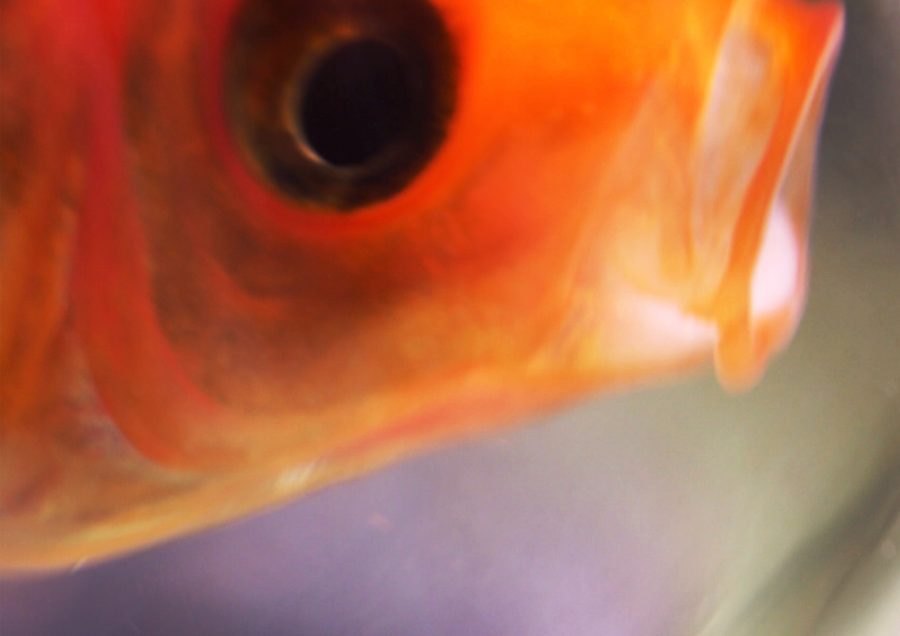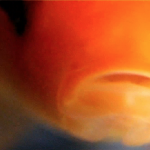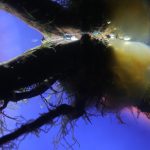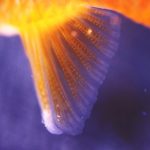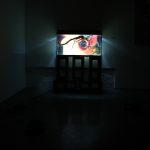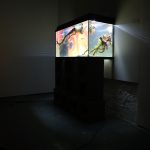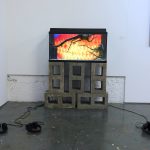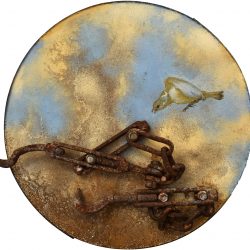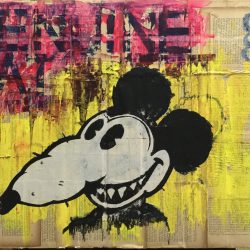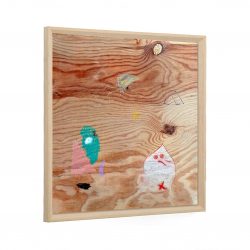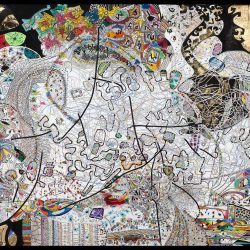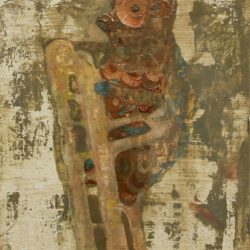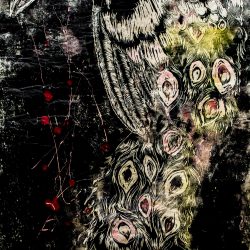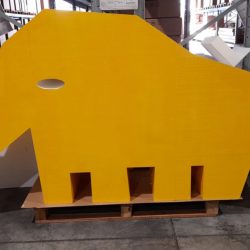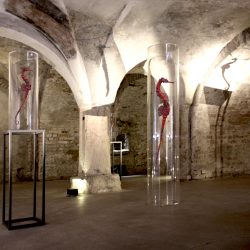work
Fantasies of Contamination / I do my bit
| category | Installation |
| subject | Animal |
| tags | |
| base | 85 cm |
| height | 120 cm |
| depth | 52 cm |
| year | 2019 |
‘Fantasies of contaminations/I do my bit’ was part of the group show ‘Planetary Dysphoria’, which the curators defined as an exploration of ‘humanistic and existential perspectives on climate change’, where ‘a new generation of artists is responding to this collective anxiety, pairing future thinking and the Anthropocene with ideas of fiction and truth, temporality and memory, escapism and shame.’
‘Fantasies of contaminations/I do my bit’ explores questions of domestication by looking at both the vulnerability and the potentiality of invasive species like goldfish. For me, aquariums have a seductive power. They are contact zones between our world and the underwater one, where all life on Earth started. At the same time, aquariums are aesthetic places for human pleasure only, contained spaces that speak of life and death simultaneously and that mirror human supremacy. Moreover, an aquarium generally reminds people of a domestic environment, which is a compelling space in the context of climate change. In fact, people use their private space as the context in which they both tackle the climate change problem by making changes in their daily lives and build excuses not to think or do more (‘I do my bit’). For me, these actions equally increase the feeling of dysphoria caused by the scale of the climate change problem. Besides, goldfish are often referred to as ornamental fish, and they are usually considered vulnerable, small and stupid, with no memory. Actually, if released into the wild, goldfish can become invasive species, destroying the surrounding ecosystem and creating a huge amount of problems for humans, too. In ‘Fantasies of contaminations/I do my bit’ there is no real goldfish in the aquarium; he is in the video playing at the back of the glass behind the wall. His proportions are enlarged, he seems huge, and most of the time he moves hysterically in the confined space of the glass. The sound used in the video comes primarily from sperm whales. These whales have brains five times bigger than ours. They communicate through echolocation, and they have dialects, too. Furthermore, whales are crucial for the whole marine ecosystem to thrive and for humans too. I wanted to use this sound as a way to decontextualize the goldfish; as humans, we tend to forget that fish are not silent. The silence we associate with them makes them passive and vulnerable in our eyes.
Installation- medium: Aquarium, water, water filter ,driftwood, moss, pebbles, HD video, sound, headphones, hollow concrete blocks.
‘Fantasies of contaminations/I do my bit’ explores questions of domestication by looking at both the vulnerability and the potentiality of invasive species like goldfish. For me, aquariums have a seductive power. They are contact zones between our world and the underwater one, where all life on Earth started. At the same time, aquariums are aesthetic places for human pleasure only, contained spaces that speak of life and death simultaneously and that mirror human supremacy. Moreover, an aquarium generally reminds people of a domestic environment, which is a compelling space in the context of climate change. In fact, people use their private space as the context in which they both tackle the climate change problem by making changes in their daily lives and build excuses not to think or do more (‘I do my bit’). For me, these actions equally increase the feeling of dysphoria caused by the scale of the climate change problem. Besides, goldfish are often referred to as ornamental fish, and they are usually considered vulnerable, small and stupid, with no memory. Actually, if released into the wild, goldfish can become invasive species, destroying the surrounding ecosystem and creating a huge amount of problems for humans, too. In ‘Fantasies of contaminations/I do my bit’ there is no real goldfish in the aquarium; he is in the video playing at the back of the glass behind the wall. His proportions are enlarged, he seems huge, and most of the time he moves hysterically in the confined space of the glass. The sound used in the video comes primarily from sperm whales. These whales have brains five times bigger than ours. They communicate through echolocation, and they have dialects, too. Furthermore, whales are crucial for the whole marine ecosystem to thrive and for humans too. I wanted to use this sound as a way to decontextualize the goldfish; as humans, we tend to forget that fish are not silent. The silence we associate with them makes them passive and vulnerable in our eyes.
Installation- medium: Aquarium, water, water filter ,driftwood, moss, pebbles, HD video, sound, headphones, hollow concrete blocks.



